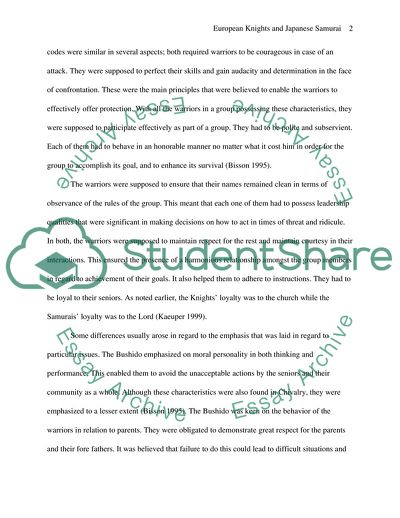Cite this document
(Comparison of European Knights with Japanese Samurai Coursework, n.d.)
Comparison of European Knights with Japanese Samurai Coursework. https://studentshare.org/history/1724244-compare-and-contrast-european-knights-with-japanese-samurai
Comparison of European Knights with Japanese Samurai Coursework. https://studentshare.org/history/1724244-compare-and-contrast-european-knights-with-japanese-samurai
(Comparison of European Knights With Japanese Samurai Coursework)
Comparison of European Knights With Japanese Samurai Coursework. https://studentshare.org/history/1724244-compare-and-contrast-european-knights-with-japanese-samurai.
Comparison of European Knights With Japanese Samurai Coursework. https://studentshare.org/history/1724244-compare-and-contrast-european-knights-with-japanese-samurai.
“Comparison of European Knights With Japanese Samurai Coursework”. https://studentshare.org/history/1724244-compare-and-contrast-european-knights-with-japanese-samurai.


